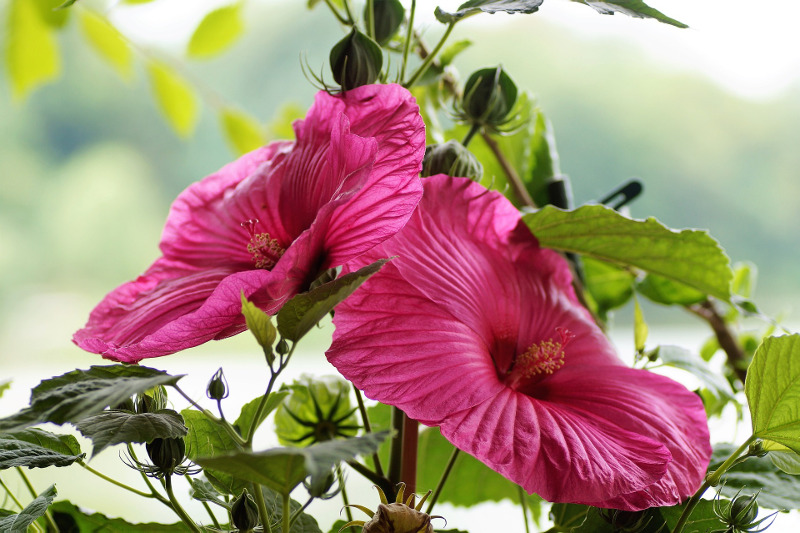Hibiscus is a common plant seen in gardens and backyards throughout the United States. This stunner has glossy green leaves and can grow very full and tall, but Hibiscus is generally grown for its flowers. Hibiscus blooms can be rather large and come in various colors but usually are in hues of pink, red, burgundy, lavender, or yellow.

Hibiscus is not very fussy and does not require much care, but feeding the plant can help it thrive and ensure that the shrub will be healthy and covered in blooms come summer.
How to Fertilize Hibiscus
The ideal soil pH for Hibiscus is slightly acidic and falls between 6.5 and 6.8. You can test your soil to determine how it rates and amend the soil accordingly. You have options when it comes to fertilizing Hibiscus. Water-soluble fertilizer can be mixed in a watering can and applied when watering the plant. Granules, a type of slow-release fertilizer, can be placed on the soil's surface and will gradually seep into the ground and roots.
You can amend the soil with compost or manure when planting to help give the Hibiscus roots an extra boost. Spreading organic matter on the ground or topdressing is another way to provide additional vitamins and minerals. The different Hibiscus fertilizers work well and deliver results, so it comes down to what works best and is most convenient for you.

Best Time To Fertilize Hibiscus
The type of fertilizer used will determine the best time to fertilize Hibiscus. A slow-release fertilizer can be applied 4 times throughout the year: early spring, after the first round of flowers die back, midsummer, and fall or early winter. If you opt to use a water-soluble fertilizer, then you can feed your Hibiscus every 2 weeks.
Best Fertilizer For Hibiscus
Help the Hibiscus start the reason off right with a balanced fertilizer, like a 20-20-20 appalled in the spring. This will provide a well-rounded mixture of nutrients. You can continue to use a balanced fertilizer throughout the rest of the growing season, or you can switch to a 12-4-8 mix.
Hibiscus grows best with higher levels of Nitrogen and Potassium, which are represented by the first and third numbers in the fertilizer mix ratio. Miracle Grow or other fertilizer mixes intended specifically for Hibiscus are good options that will provide the nutritional support your plant needs to thrive.
Hibiscus Fertilizing Tips
- Water Hibiscus before applying fertilizer to prevent fertilizer burn.
- Apply fertilizer on the ground about 1 to 2 feet away from the base of the shrub to ensure the food reaches the entire root system.
- Apply slow-release fertilizer during the early spring, after the first round of flowers die back, midsummer, and fall or early winter.
- Apply fertilizer every 2 weeks.
- Water thoroughly to dissolve fertilizer and help distribute it throughout the root system.
Warnings
-Always wear protective gloves and a face mask when handling chemical fertilizers.
-Closely follow all directions and storage guidelines that are on the fertilizer label.
 |
Author Alison Cotsonas - Published 12-13-2021 |
